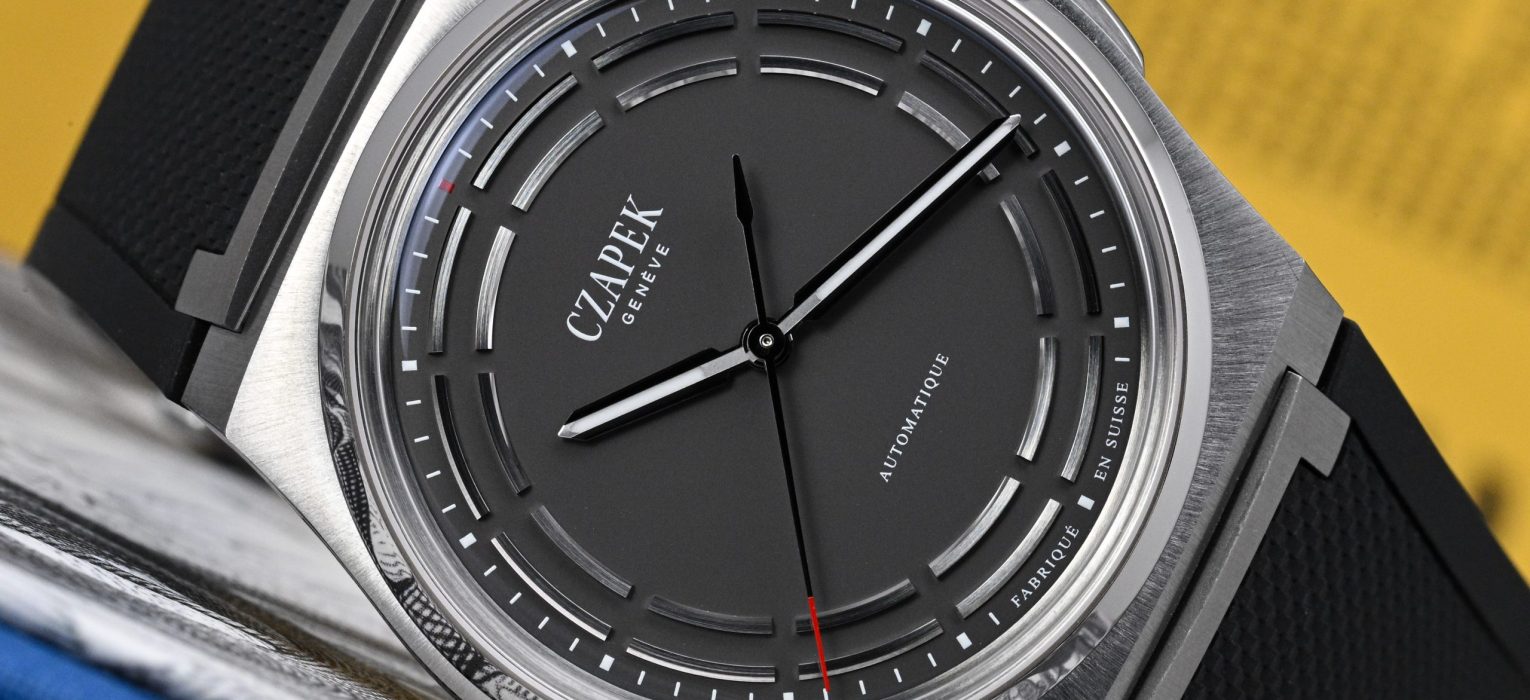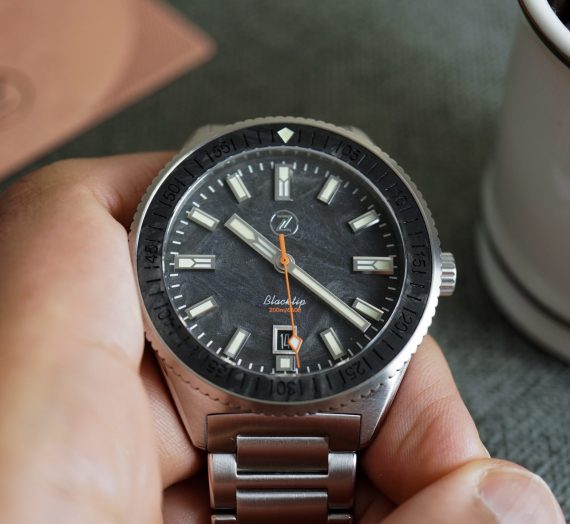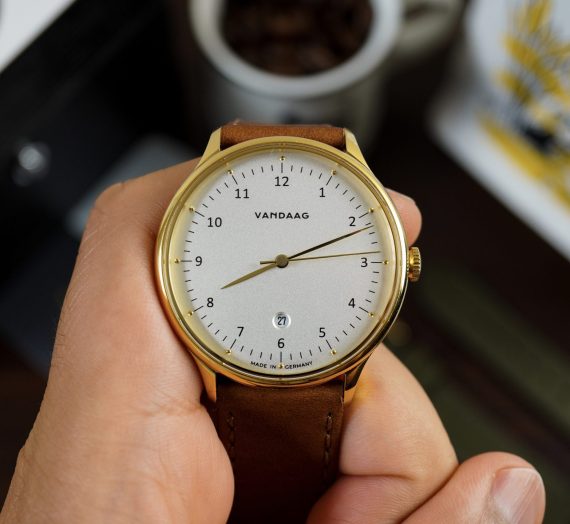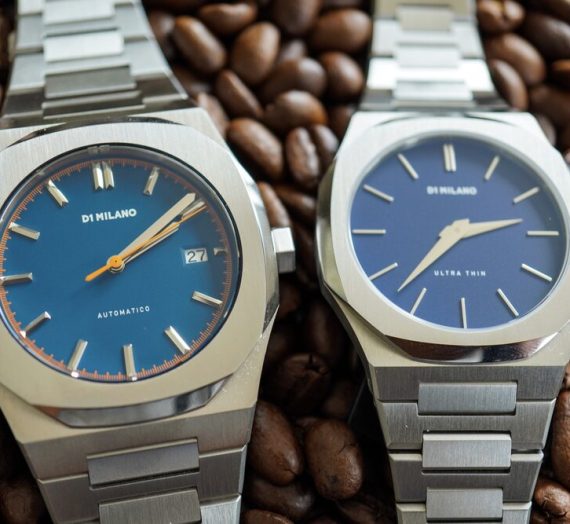Disclaimer: this video/review was not sponsored by Czapek or any other entity. This watch was generously loaned to me by my friend @watchsymmetry. Please check out his Instagram to see more photographs of this watch and other exceptional pieces.
Video
Review
I’ve handled quite a few Czapek Antarctiques over the last few years, but this is the first time I’ve been able to spend some quality time with one. This is the Antarctique Titanium Dark Sector, generously loaned to me by my friend @watchsymmetry. It is one of the brand’s more recent releases and, I believe, their first titanium Antarctique. This watch has a retail price of roughly $38,500 USD, and at the time of this review, the brand requires a deposit of approximately $15,000 USD, with delivery promised in about one year.
The first thing that stood out to me during the release of this watch was the fact that it is now roughly $12500 USD more expensive than its steel variants. Sure the dials are different too, but the difference in price seems entirely excessive to me, particularly when you can get excellent titanium watches on bracelet that cost just a little more than the difference. Price aside, I’ve typically had mixed feelings about the Antarctique lineup in general, and getting to spend extended time with one has only reinforced those feelings.
Let’s get into it..
Case
I measured the case to be 40 mm in diameter, 41 mm at its widest, 44 mm along the length of the case, and 50 mm across including the strap. The total thickness is an impressive 11 mm, including the top and bottom sapphire crystals. Given the liberal use of polished accents, I’d say the case is made entirely of Grade 5 titanium.
The case has a very Gérald Genta-esque design, clearly inspired by the golden era of 1970s integrated bracelet watches. The Antarctique adds a fresh twist with its partially hollowed-out case. From what I can tell, the mid-case shell houses an internal structure that is held in place by the bezel and case-back. It looks to be far more complex than it appears at first glance.
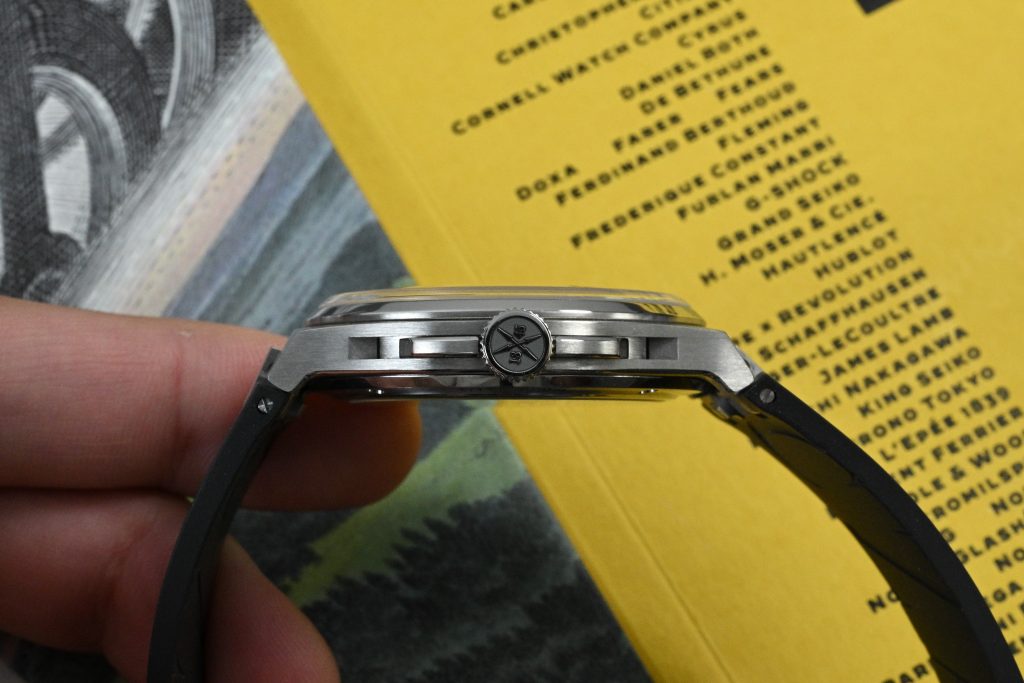
Xavier de Roquemaurel brought this concept to Adrian Buchmann, head of product design at Christopher Ward since 2015 and a contract watch and movement designer through his firm Fuzion GmbH. He has an impressive design portfolio. I’m a big fan of his work for Christopher Ward, Czapek, Sequent, and more. He seems to work often with Czapek, having designed the original Antarctique platform and its movement, the Antarctique Sashiko, the Czapek Complicité, the Place Vendôme Tourbillon, and others. Czapek co-founder Harry Guhl also works with Adrian on his other brand Chronotechna, which has case designs that follow the same Christopher Ward light catcher style we’re familiar with.
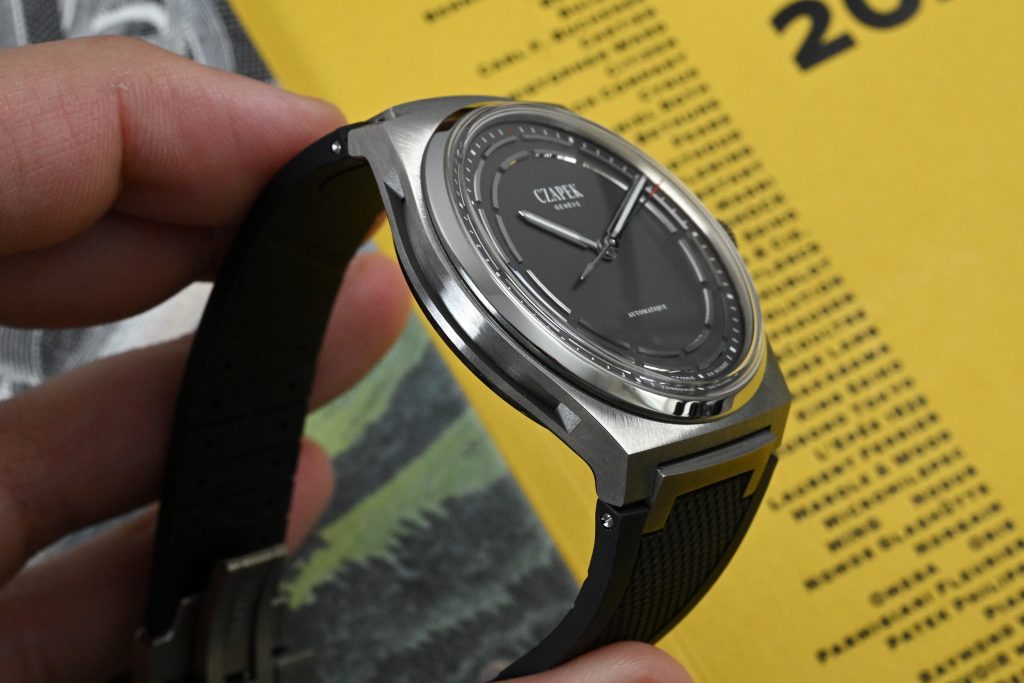
While the case is well made and visually appealing, I can’t say I love the tactile experience. The edges feel a bit too sharp and could have been softer. The recessed, hollowed sections are cut at sharp 90-degree angles that haven’t been smoothed out. From what I understand, this is an intentional choice. I see the appeal of razor-sharp edges on a watch inspired by the 70s, but I personally don’t enjoy the feel. This is most noticeable with the sharp floating end link, which I’ll discuss later.
That said, the quality of brushing and polishing is excellent. I especially love the brushed finish on the top surface of the case. It is done to a very high standard.
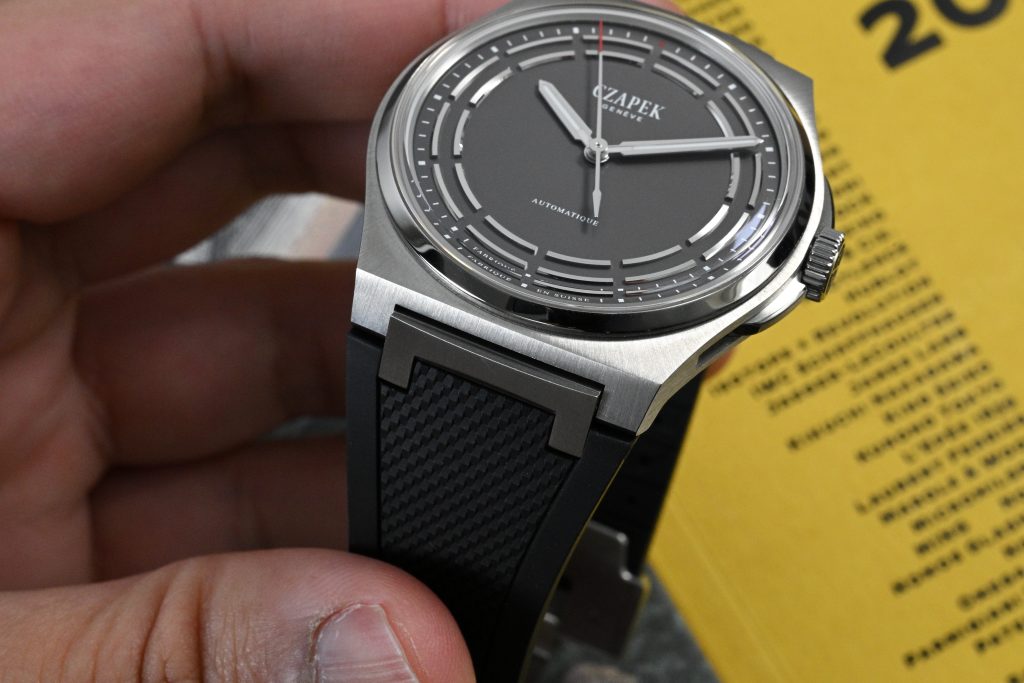
There is a 6 mm crown at the 3 o’clock position that is easy to grip and operate. It has a softer, smoother finish than the rest of the case, making it more pleasant to the touch. Flipping the watch over, the case-back is secured to the mid-case with screws. This watch is rated for 120 m of water resistance, which is impressive for a watch of this kind. For comparison, the Christopher Ward C12 Loco is rated at just 30 m, while the Twelve and Twelve X collections go up to 100 m. Among high-end integrated bracelet watches, Patek Philippe recently announced a uniform 30 m water resistance across its lineup. Audemars Piguet offers 50 m on the 41 mm Royal Oak. Vacheron Constantin, however, reaches a notable 150 m with the Overseas.
Dial
If you’re anything like my friend @watchsymmetry and love titanium watches, sector dials, and symmetrical, creative designs, this watch is a perfect fit. Him owning it makes complete sense. The dial base is anthracite, with a slightly rough matte finish that leans more metallic than solid in color. It complements the titanium case well.
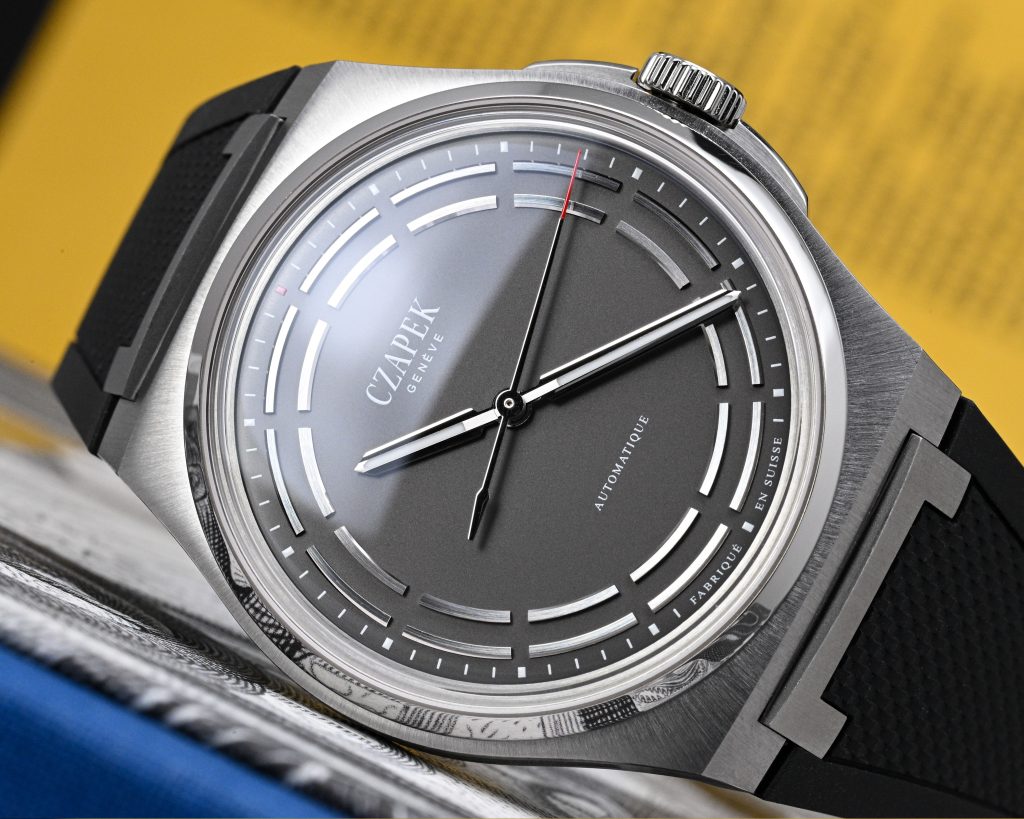
The traditional outer minute track is printed in white, with a red marker at 12 o’clock and clear ticks throughout. Despite the modern approach to hour markers, minute and seconds legibility remains excellent. This stands in contrast to Chronotechna watches, which adopt a similar aesthetic but lean more into a MING-style design.
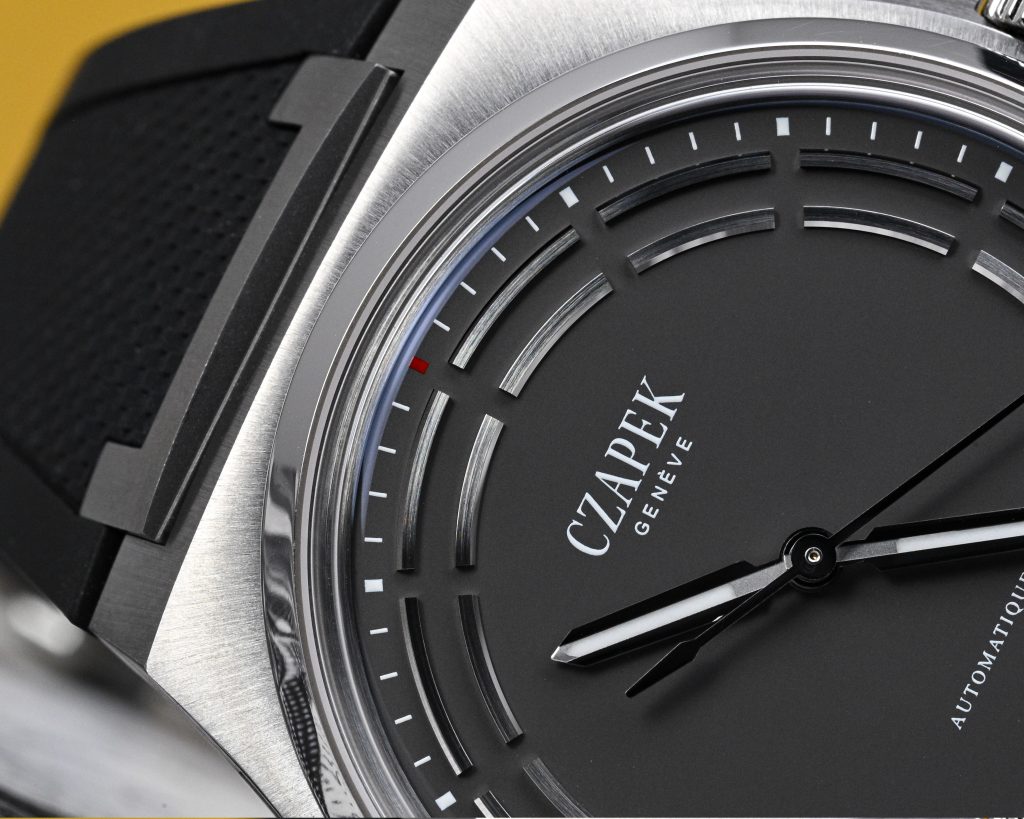
Closer to the center, tall metallic structures are arranged in two interrupted concentric rings, with the gaps serving as hour markers. This Stonehenge-like formation looks fantastic on the wrist, and the towering 3D elements cast striking shadows on the pale grey surface. The rings have brushed top surfaces and sharp cuts, echoing the case’s design. Their unfinished angles appear intentional, though I can’t help but imagine how some hand-polished bevels would elevate them.
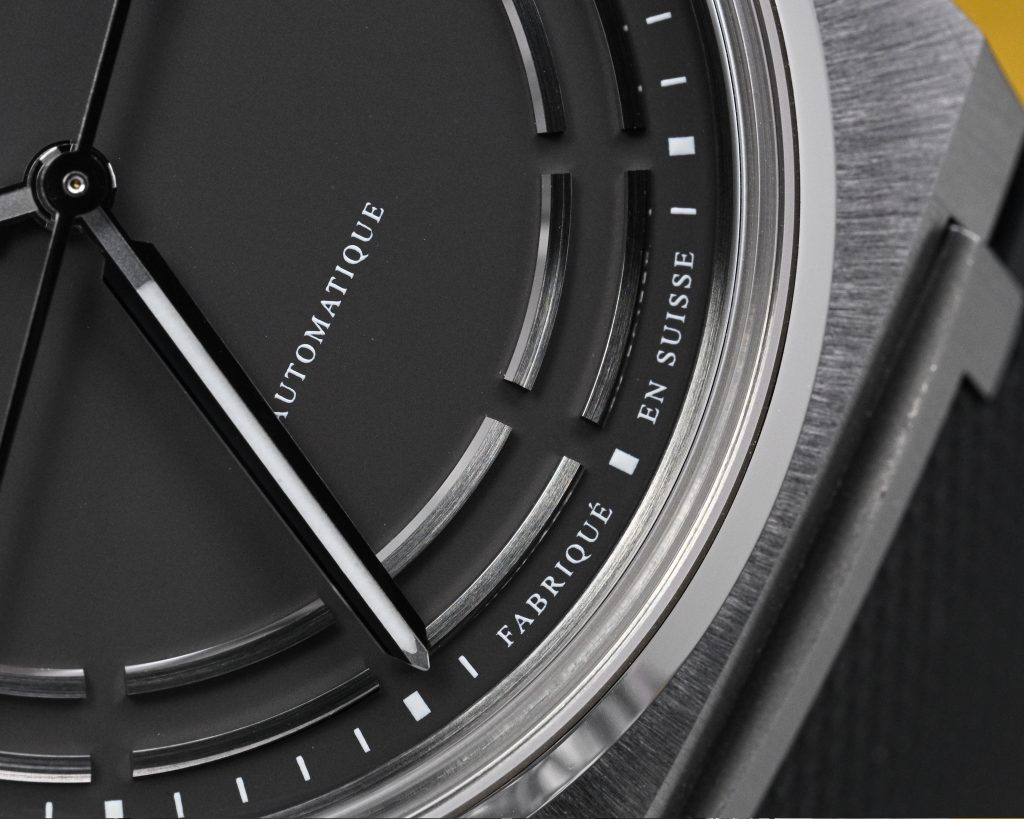
The logo is printed at 12 o’clock, with “Antarctique” above 6. The layout is clean and restrained, even with the ornate metalwork. I’m a fan of the design and feel it has been executed very well. The hands are more traditional, with multiple finishing styles, facets, and large lume-filled plots. The style feels familiar, and I would have liked to see more creative risks here. That said, legibility is excellent and the overall dial execution and finishing is of high quality.
Lume
The hands are the only lumed components on this watch, and I’m a bit surprised that Czapek chose to include lume at all, given how restrained the rest of the dial is. But I’m glad they did, because any amount of lume is a good amount of lume.
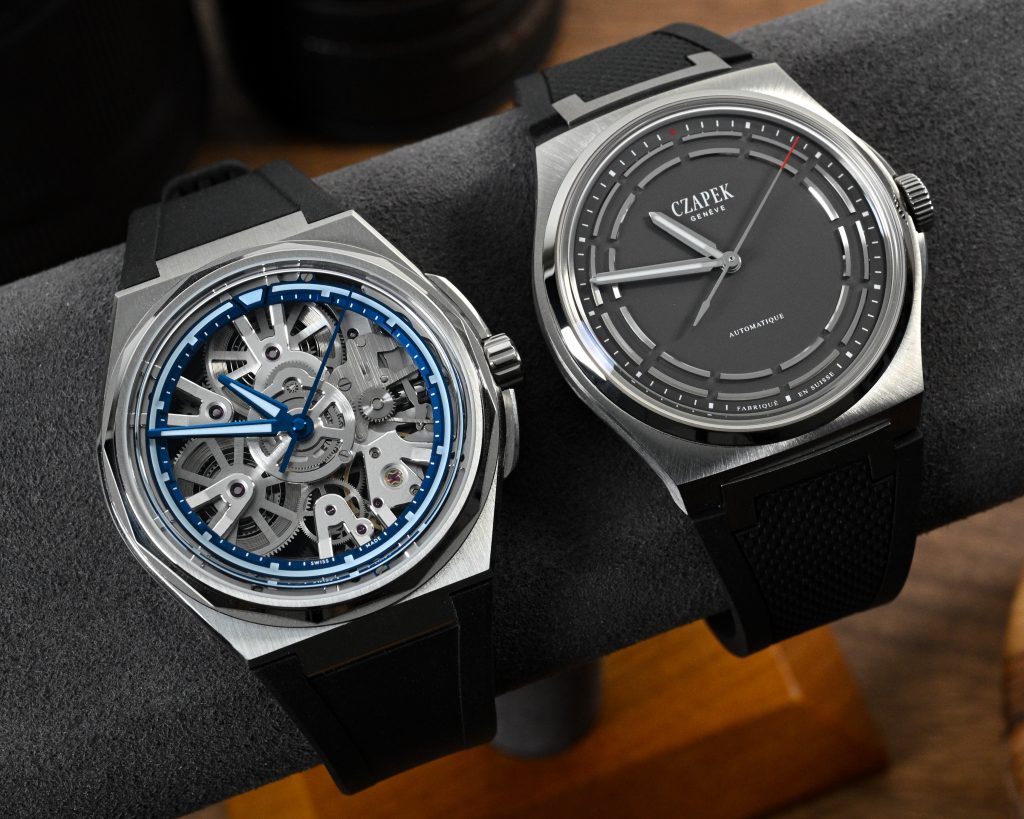
The hands glow fairly brightly and maintain visibility well into the night. They won’t be winning any awards for brightness, but they are sufficiently potent for a watch with 120 meters of water resistance that may be used in dark environments.
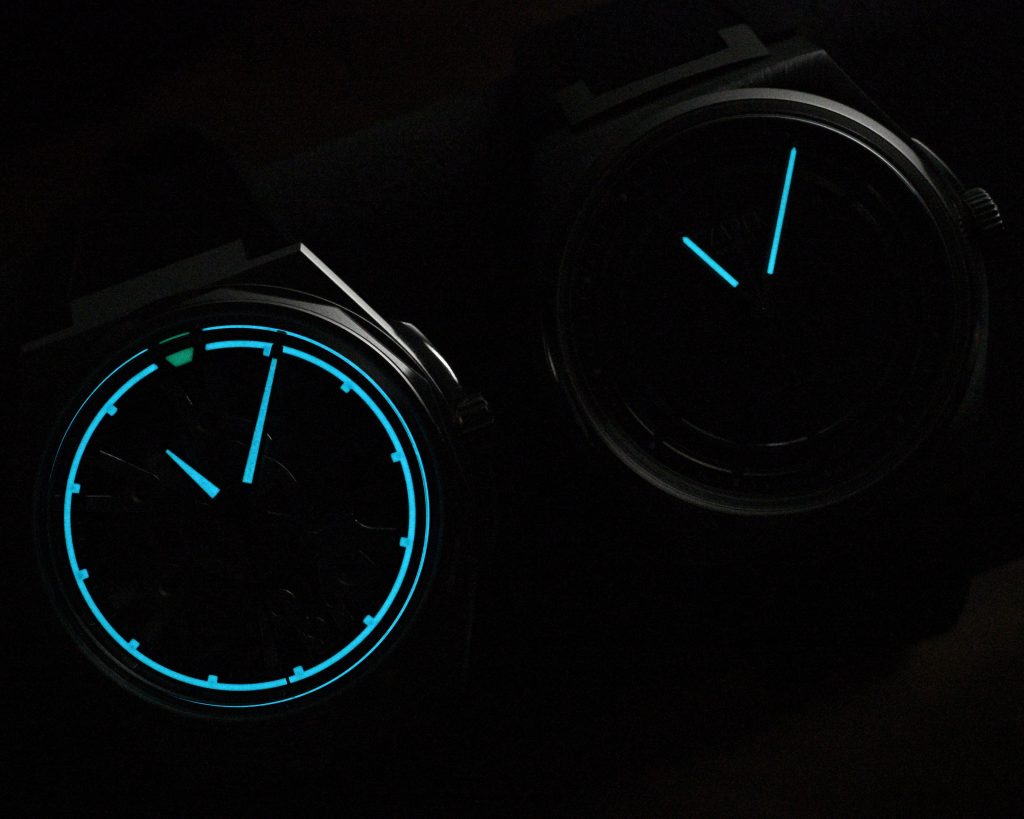
Since the Christopher Ward Twelve often sparks strong opinions among my Antarctique-owning friends, I decided to compare it to my Twelve X Special Edition in a short timelapse. The Czapek clearly performs better. The Christopher Ward uses a tinted lume pigment (Grade X1 BL Pantone 290), which is easily outshone by what appears to be BGW9 Grade X1 Super-LumiNova on the Czapek.
Movement
While there are aspects of the case that I don’t love, the Caliber SXH5 that powers this watch is something I absolutely adore. The design appears to draw influence from traditional watch movements but is executed in a very contemporary way, blending an industrial aesthetic with artisanal techniques, such as the beautiful interior angles on the bridge supporting the seconds wheel.
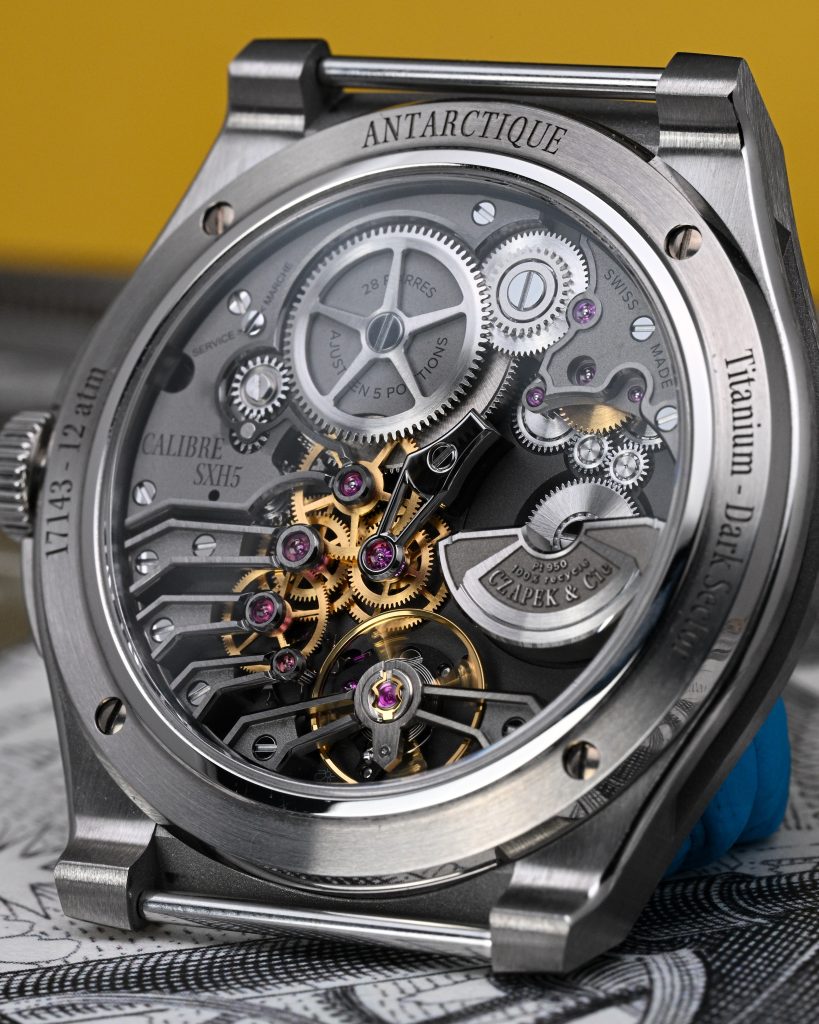
While the Czapek SXH1 and SXH2 are catalog Chronode movements with minor design changes, and the SXH3 similarly comes from Vaucher, the SXH5 was more of a custom project. It was designed in collaboration with Adrian Buchmann and engineered by Daniel Martinez, Emmanuel Bouchet, Dann Phimphrachanh, Julian Vallat, and others. These independent watchmakers and designers cumulatively have an extraordinary resume, working on haute horology movements and watches for brands like Greubel Forsey, as well as robust and reliable timekeepers at places like Sellita.
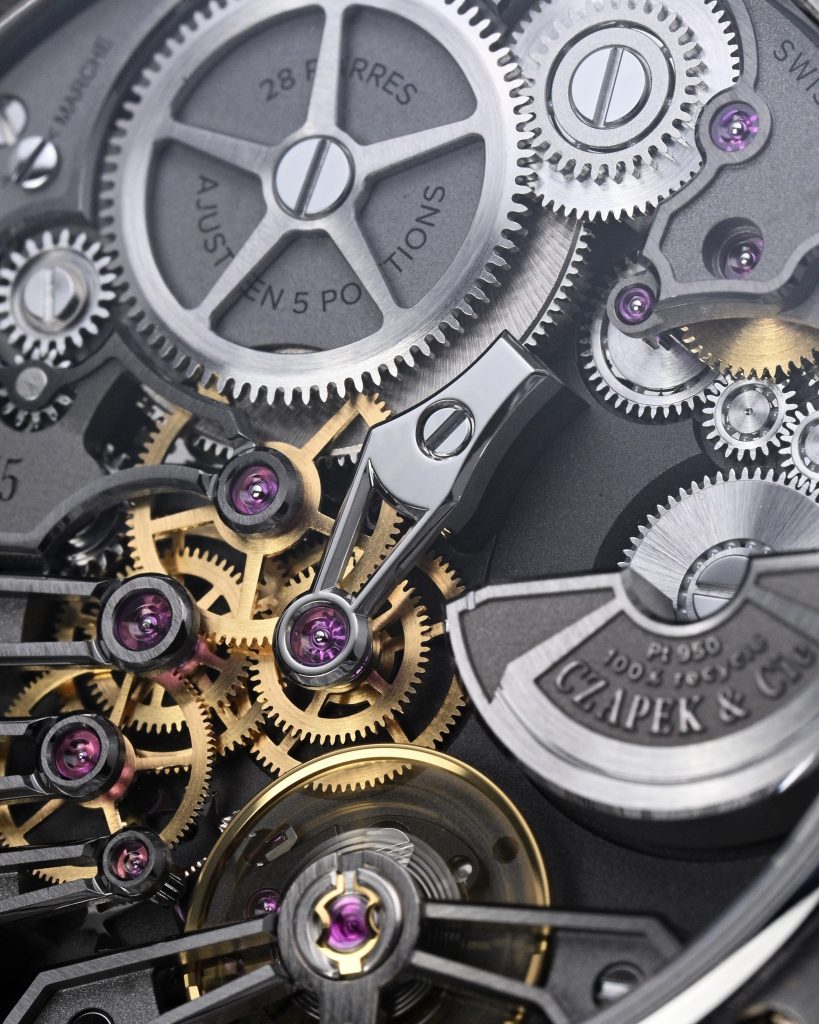
The result of this impressive collaboration is an iconic movement that offers 60 hours of power reserve. It features a Swiss lever escapement, a variable inertia balance, and beats at 4 Hz. The movement consists of approximately 193 components. The bridges and plates are manufactured in-house by Czapek, while the remaining components are sourced from various suppliers. I believe the interior angles on the central seconds bridge are finished by Chronode, though I could be mistaken. The other bridges feature hand-polished bevels that are easy to overlook due to the dark anthracite finish. The overall architecture is stunning, and I love how everything is laid out.
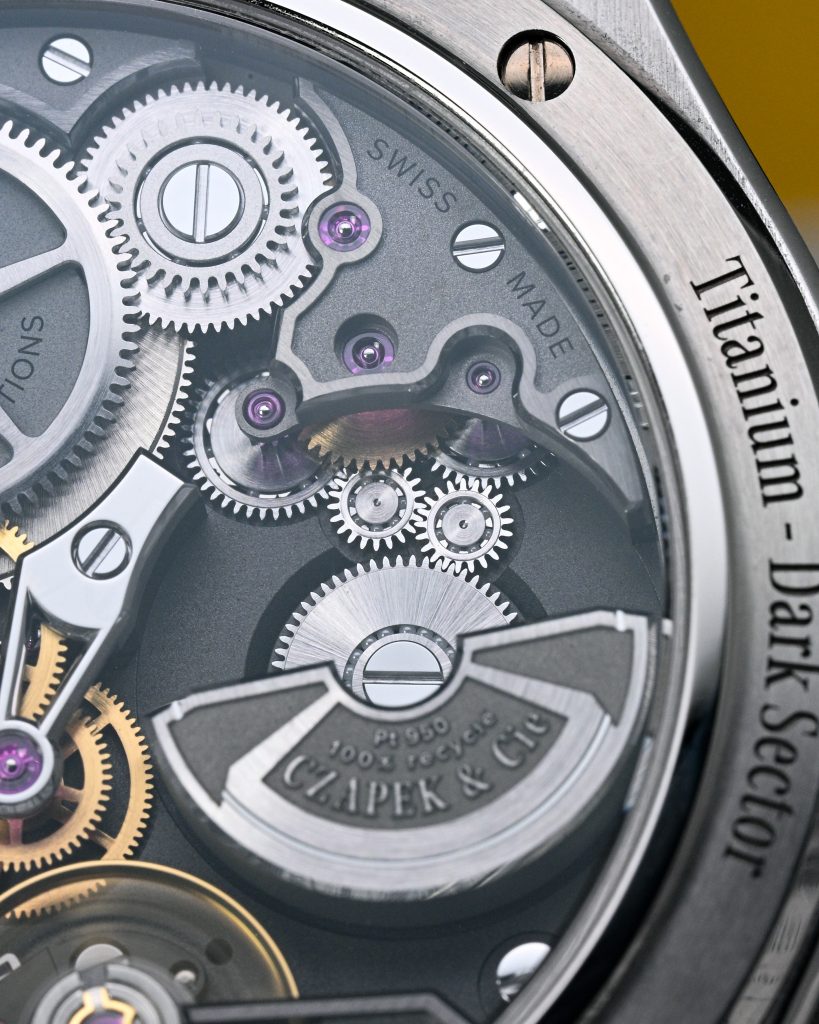
From what I’ve gathered, Czapek initially launched this movement with a chronometer certification, but they no longer offer that certification or even specify an accuracy range on their website. Anecdotally, I’ve heard nothing but positive feedback regarding the movement’s accuracy, but at around 38,500 USD, including a chronometer certification seems like a no-brainer.
Additional reading: Czapek SXH5 by Escapement Magazine – Part 1, Part 2, Part 3
On The Wrist
At 41 mm in diameter and with its short case length, the Antarctique wears comfortably on my 6.75″ wrist. The 11 mm overall thickness contributes to a good fit, and the recessed mid-case helps reduce the visual weight, making the watch appear even slimmer.
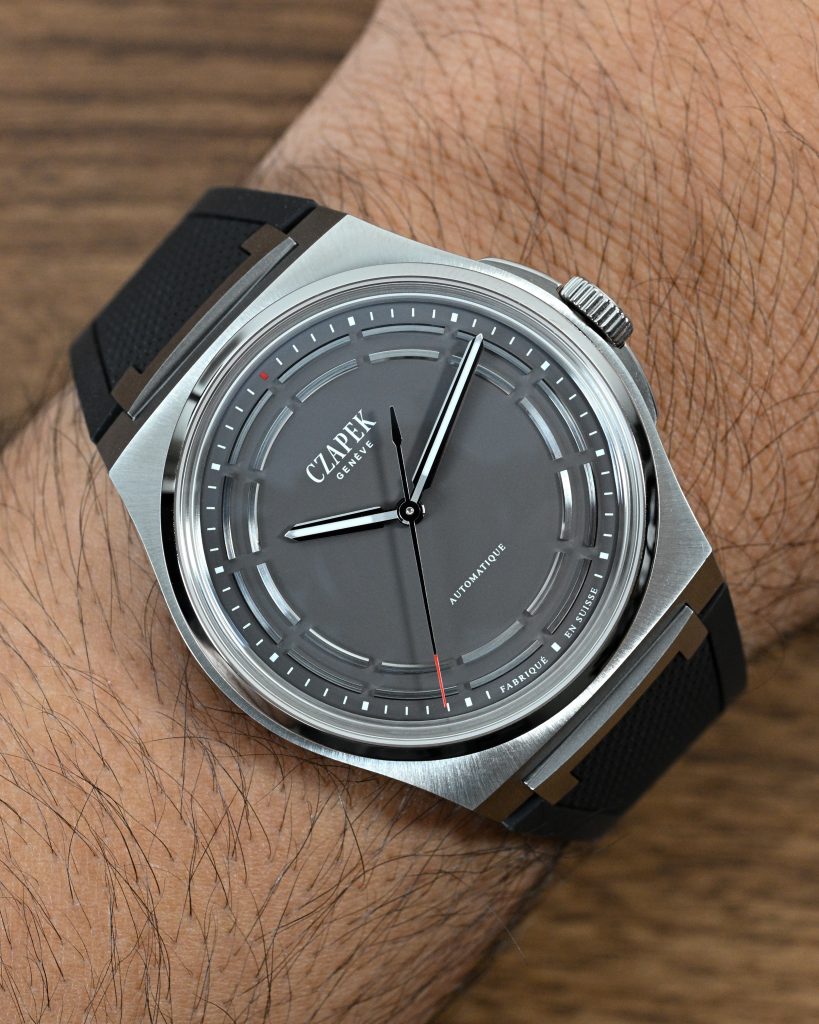
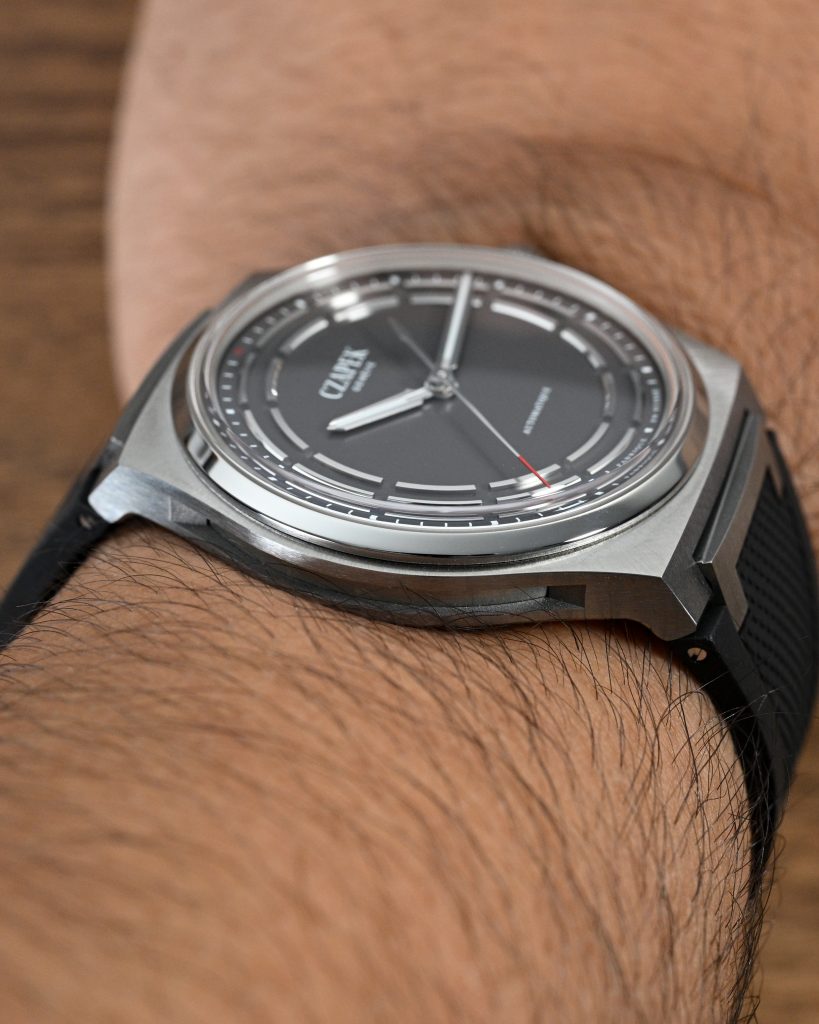
I requested to borrow this watch on the rubber strap, as I figured it would be easier to photograph the movement, so I can’t comment on the bracelet. However, the quality of the strap is very good, and the titanium butterfly-style clasp feels solid as well.
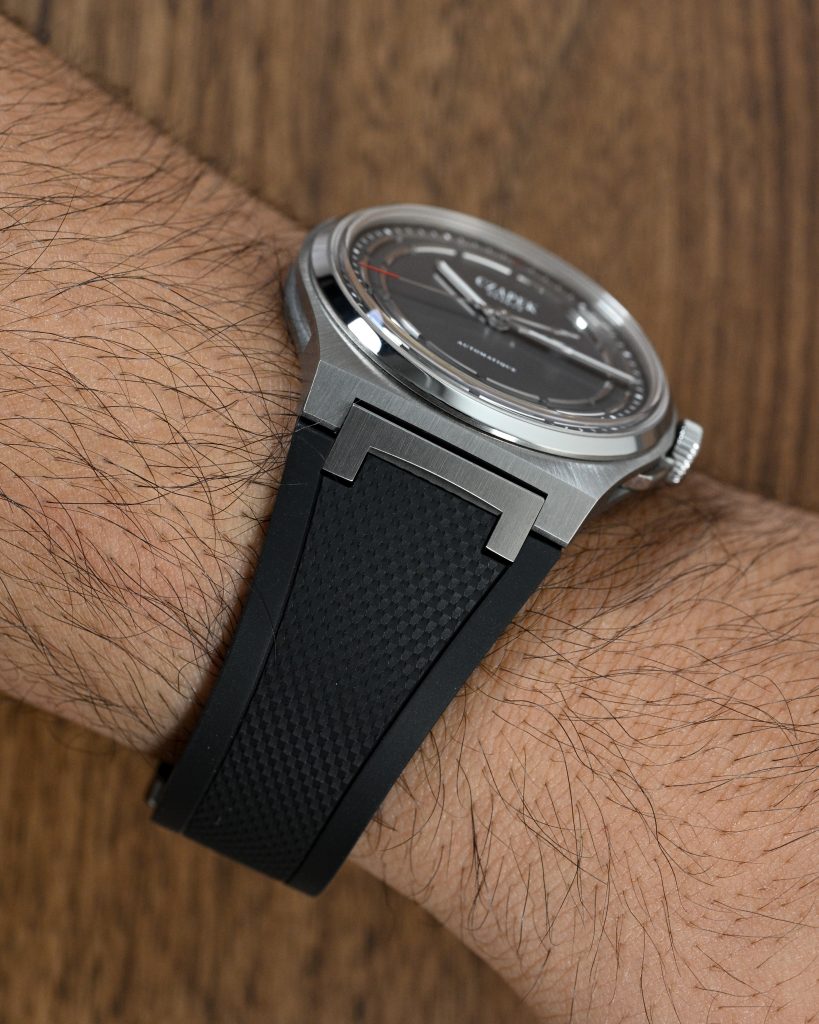
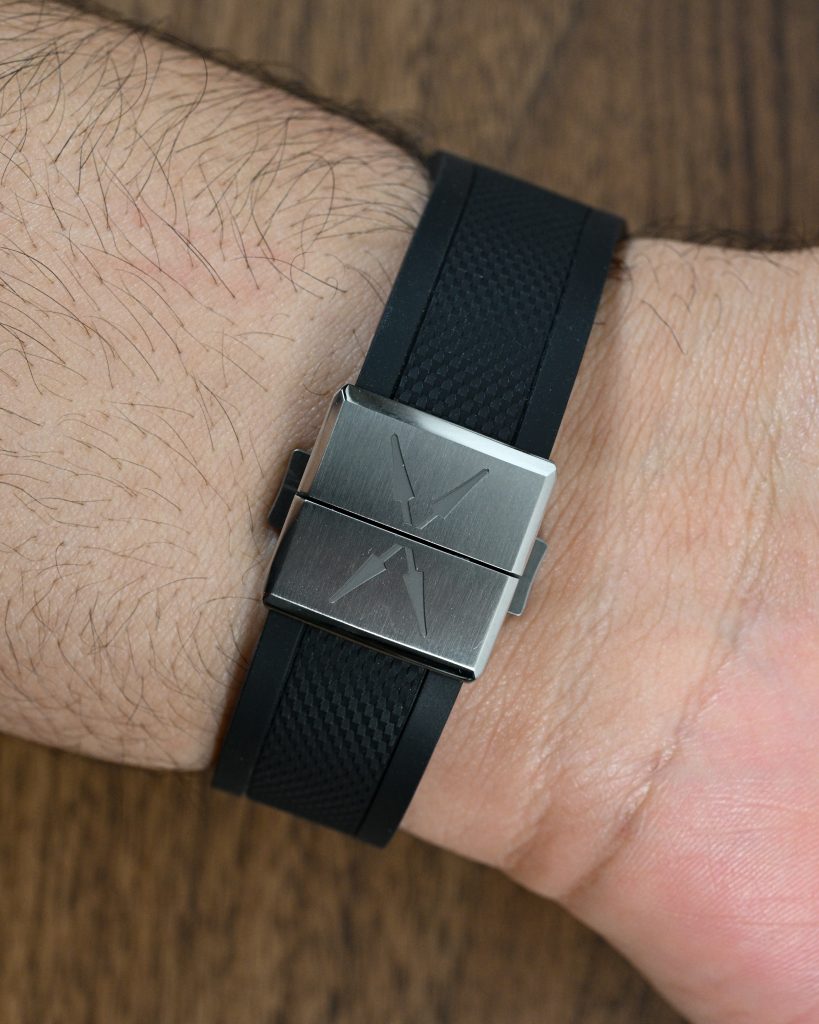
What I strongly dislike about this watch are the end links. They articulate well, which benefits comfort, but there’s a sharp, unfinished edge that protrudes from the case and feels extremely unpleasant to the touch. I’ll never understand the design decision to leave such edges unrefined, but perhaps this is simply where the watch doesn’t suit my personal preferences. There is a clever quick-release system that functions like a locking knob on the back of the watch. Oddly, even when secured, the end links have a noticeable amount of slack, reminiscent of a vintage Rolex bracelet with plenty of jiggle and wiggle.
Wrapping Up
I’ll wrap this up quickly and simply: I like this watch quite a bit. I find the movement to be breathtaking in both design and execution, and that alone is a strong enough characteristic for me to overlook some of the aspects I don’t like. I really don’t love the execution of the case, and I find it lacking in refinement. Before you bring out the pitchforks, this is just my opinion. Perhaps the painfully sharp edges are part of the design, and I’m simply too much of a caveman to appreciate the intention behind them.
At around $38,500 USD, I personally feel that more should be expected from this piece, such as an included chronometer rating from COSC and perhaps more hand-finished details on the dial structures. But for those who disagree with me, I’m sure you’ll find the titanium package absolutely delightful, and the dial is arguably one of the most unique to come from the brand.
The movement is spectacular, and I can’t wait to find a Czapek that speaks to me using this caliber, because I’m definitely sold on it.

